What Are the Different Types of LED Strips? Pros, Cons & Best Uses
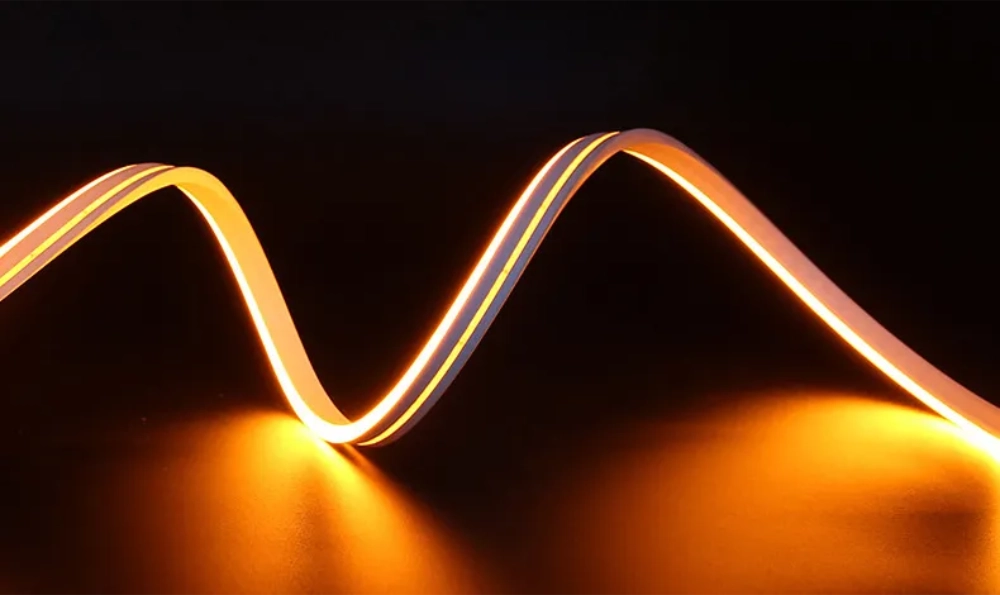
LED strip lights have transformed how we design and experience lighting. With their slim profile, flexible application, and incredible efficiency, they can elevate everything from living rooms to retail displays. But not all LED strips are the same. In this guide, we’ll explore the different types of LED strips, highlight their strengths and weaknesses, and help you choose the best option for your space. Spoiler alert: COB LED strip lights come out on top, and The Accent Light has the best ones to light up your world.
What Is an LED Strip Light?
An LED strip light is a flexible circuit board populated with LEDs (light-emitting diodes). These strips can emit single or multiple colors and are commonly used for task, accent, or decorative lighting.
Where they shine:
- Under-cabinet lighting
- Wall and ceiling accents
- Retail and display lighting
- Backlighting for furniture or TVs
Powering LED strips: Most are powered by 12V or 24V DC power supplies. The difference lies in brightness, current draw, and voltage drop across the strip length. Here’s a helpful breakdown of which voltage might suit your project best.
Efficiency & Lifespan: LED strips are not only energy-efficient but also long-lasting. With proper installation and cooling, they can last up to 50,000 hours, making them ideal for permanent lighting enhancements.
Different Types of LED Strips
LED strip lights are categorized based on the LED chip technology used. Here’s a detailed overview of each of the different types of LED strips:
1. SMD LED Strips (Surface-Mounted Device)
These strips use discrete surface-mounted LEDs that sit on top of the strip. Each chip emits light individually, and they are commonly used in consumer LED products.
- Common SMD sizes:
- 3528: Single color, low power, suitable for indirect accent lighting
- 5050: Triple chip design, brighter, capable of RGB color mixing
- 2835: Brighter and more efficient than 3528 with better heat dissipation
- 5630: Larger chip, high brightness, used in commercial-grade lighting
- Pros: Cost-effective, widely available in different configurations
- Cons: Visible diodes create a dotted appearance, lower light uniformity
- Best for: Basic under-cabinet lighting, hobby lighting, decorative accents
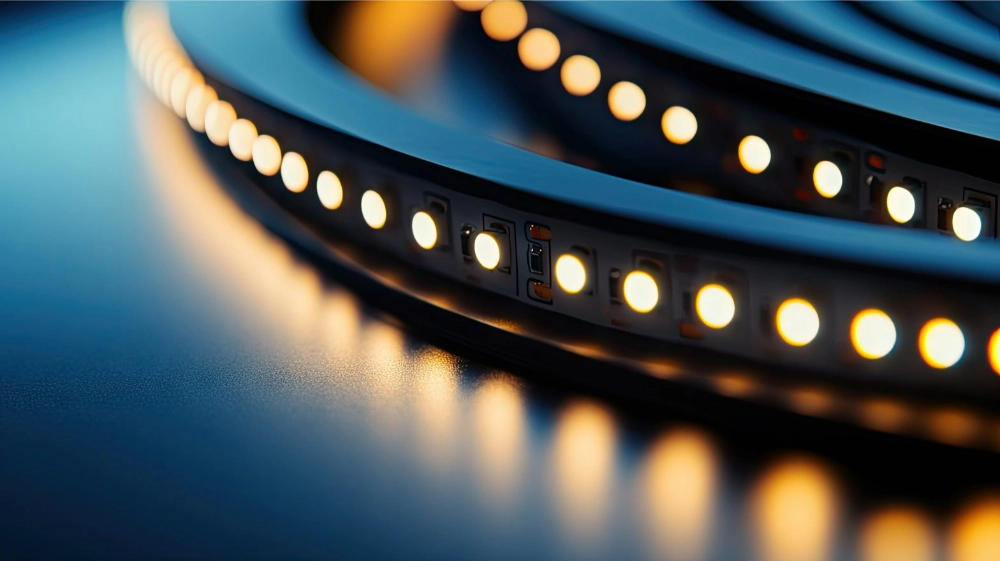
2. COB LED Strips Light (Chip on Board)
COB strips fuse LED chips directly onto the strip substrate, resulting in a continuous ribbon of light with no visible dots.
- Pros:
- Seamless, dot-free glow ideal for modern, clean aesthetics
- Excellent heat management and longer lifespan
- More flexible than traditional SMD strips
- Cons: Slightly more expensive upfront but provides better overall value
- Best for: Visible applications, high-end residential, retail display lighting
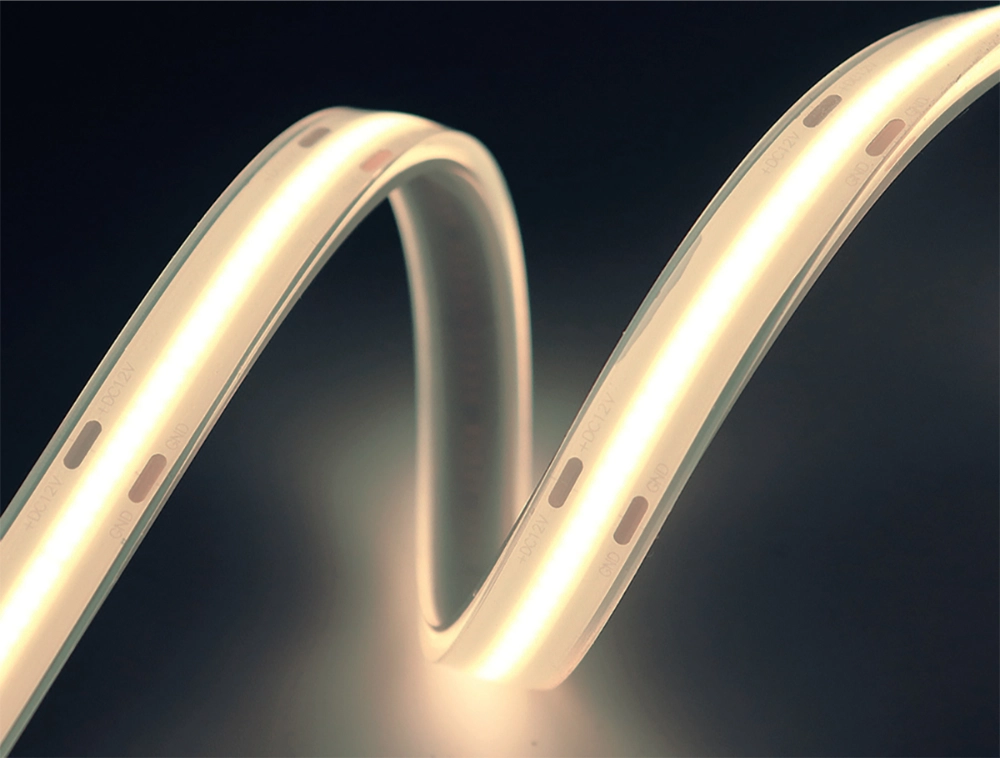
3. High-Density LED Strips
High-density strips contain more LED chips per meter than standard versions. More LEDs = more light output and smoother distribution.
- Pros:
- Bright, even light with fewer shadows
- Ideal for areas requiring stronger illumination
- Cons:
- Generates more heat; requires proper heat dissipation
- Best for: Kitchens, garages, workshops, or retail shelving
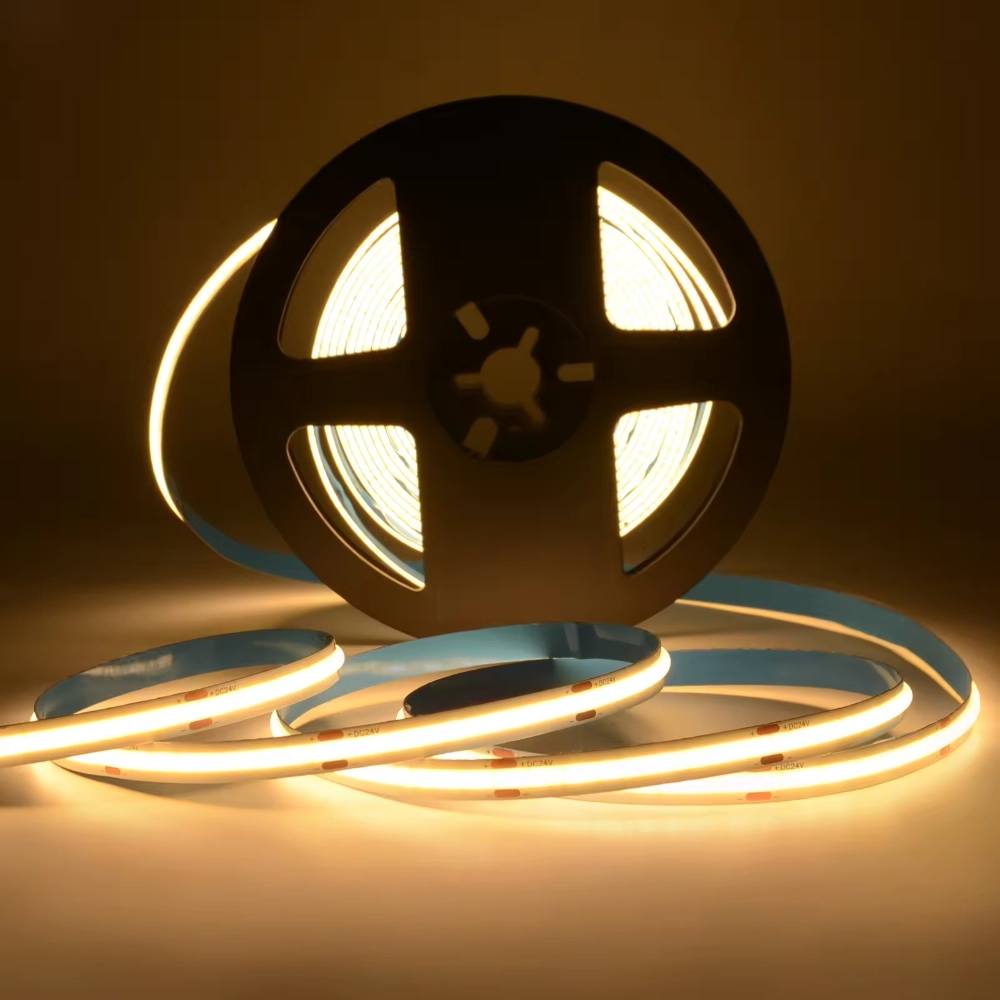
4. Addressable (Digital Pixel) LED Strips
These advanced strips allow individual control of each LED or segment through a digital controller, one of the different types of LED strips.
- Common chipsets: WS2811, WS2812B, SK6812
- Pros:
- Enables custom effects like chasing, fading, and strobing
- Perfect for dynamic and creative lighting displays
- Cons:
- Requires controllers and programming knowledge
- Best for: Commercial signage, entertainment lighting, interactive environments
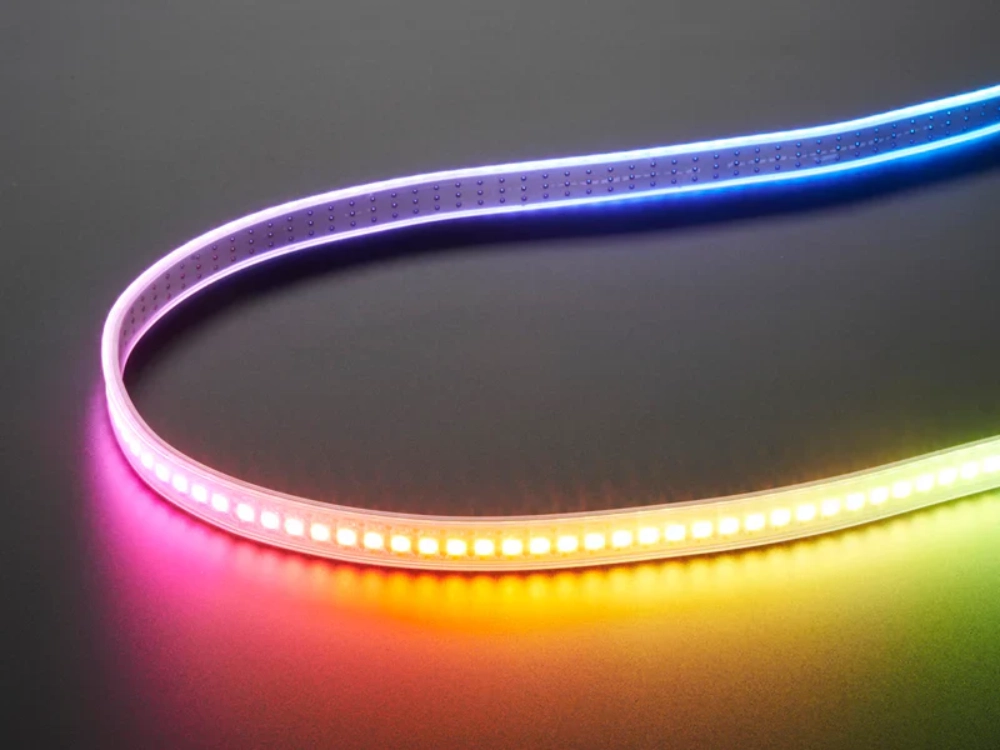
5. RGB and RGBW LED Strips
RGB strips combine red, green, and blue LEDs to produce a wide color spectrum. RGBW includes a fourth white chip for enhanced white light.
- Pros:
- Offers multi-color options for ambiance control
- RGBW adds cleaner white light for functional spaces
- Cons:
- Requires color controllers or remote systems
- Best for: Gaming rooms, party venues, or adaptable spaces
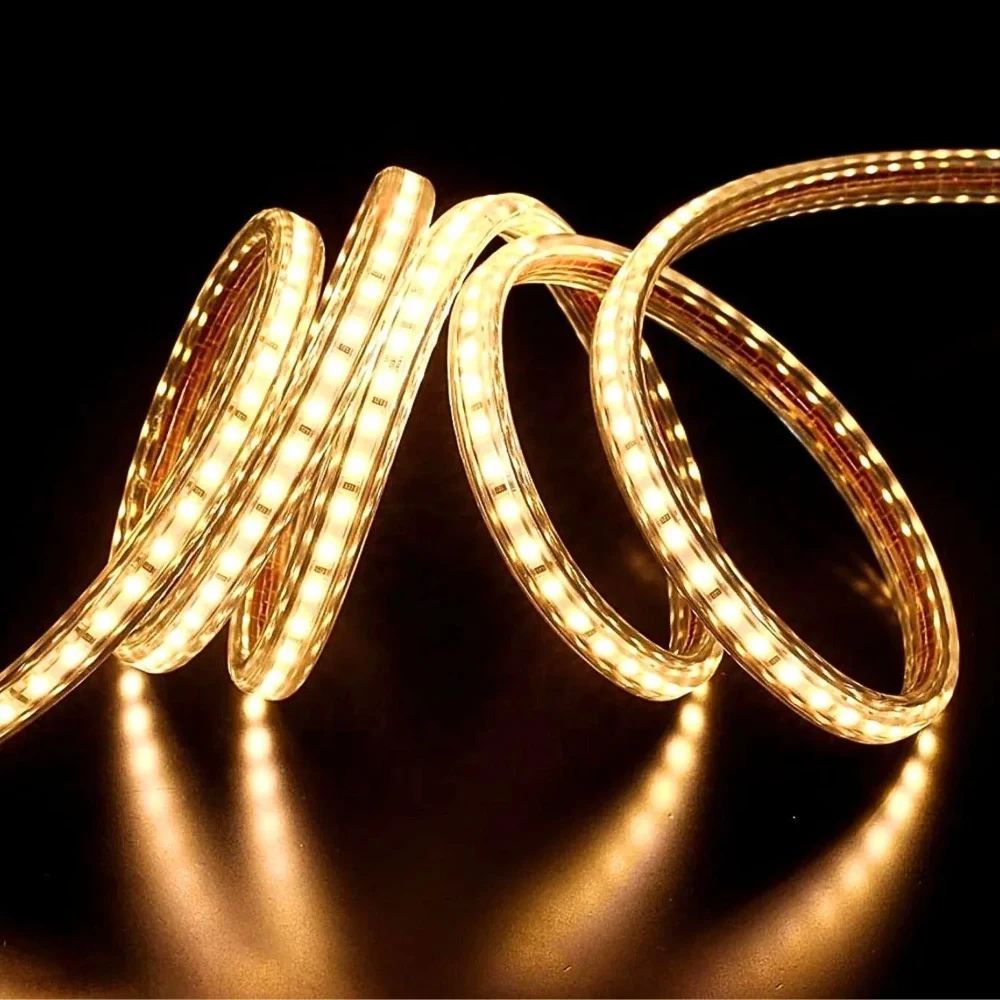
6. RGBCCT LED Strips (RGB + Tunable White)
RGBCCT strips merge RGB and dual-white LEDs (warm and cool), giving full-spectrum color and customizable white lighting.
- Pros:
- Maximum flexibility for both mood and functional lighting
- Ideal for users who want total lighting control
- Cons:
- More expensive and requires smart controller systems
- Best for: Modern smart homes, design-focused interiors
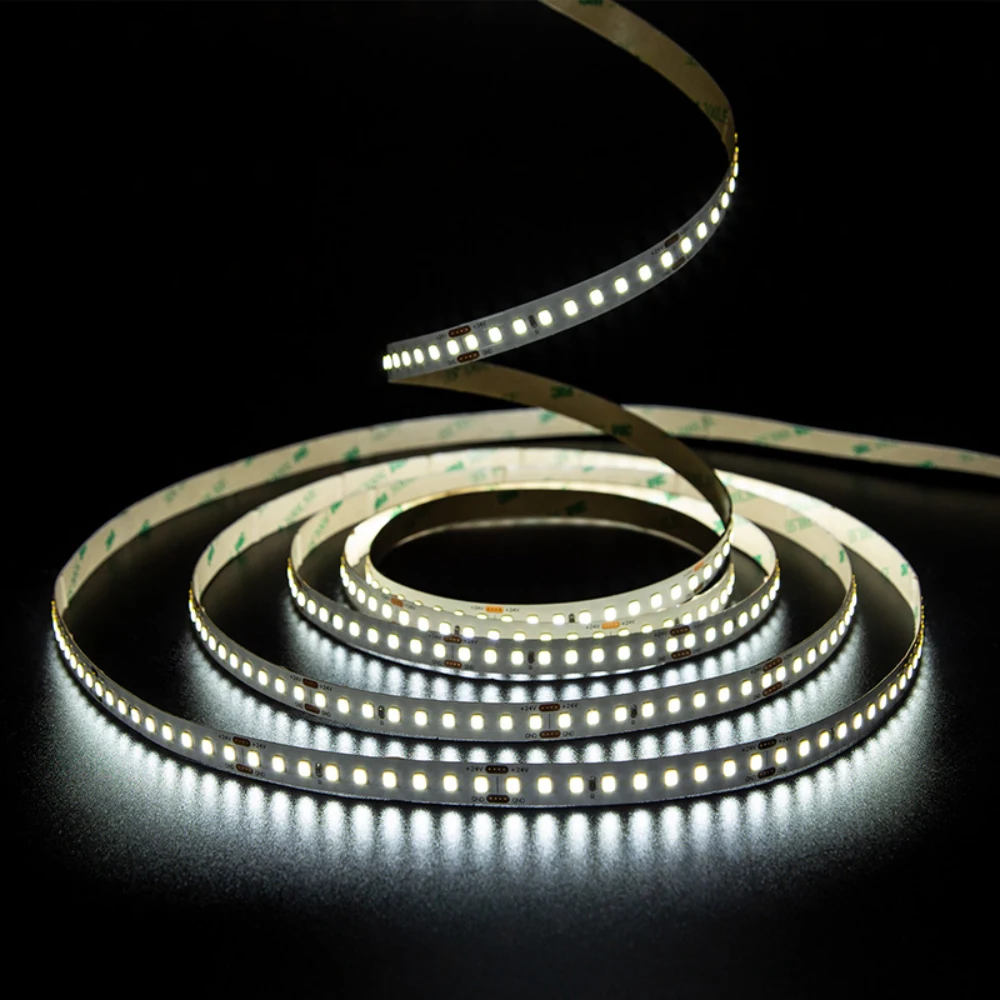
7. Waterproof LED Strips
These different types of LED strips come coated or encased in silicone or epoxy to protect against moisture and dust.
- IP Ratings:
- IP65: Splash-proof
- IP67: Submersible short-term
- IP68: Long-term underwater use
- Pros:
- Suitable for outdoor and damp environments
- Cons:
- Less flexible and slightly lower brightness due to the coating
- Best for: Outdoor decks, bathrooms, landscaping, signage
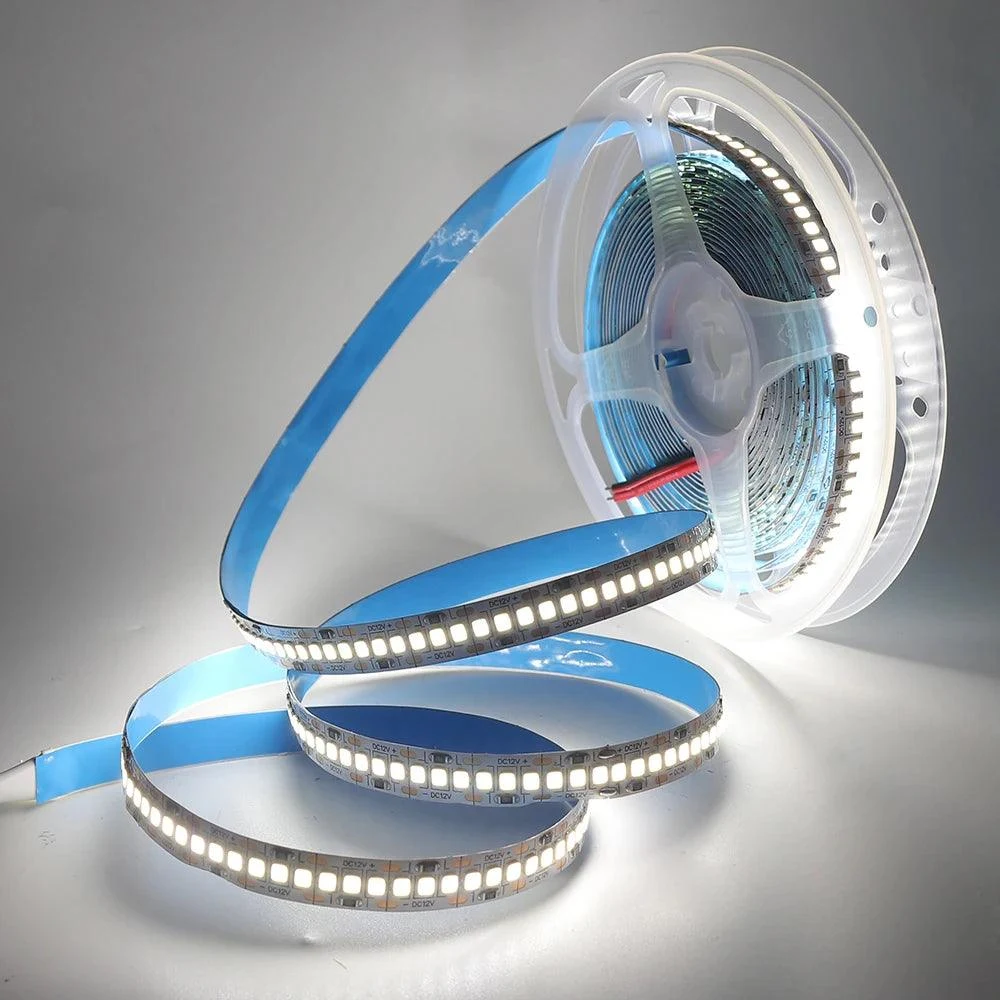
Compare Different Types Of LED Strips
| Type | Light Quality | Flexibility | Ideal For | Visual Appearance |
|---|---|---|---|---|
| SMD 3528 | Medium | High | Accent lighting | Dotted |
| SMD 5050 | High | Medium | Color & brightness | Slightly dotted |
| COB | Excellent | High | Premium & clean look | Seamless |
| RGB/RGBW | Colorful | Medium | Mood lighting | Dotted with color |
| RGBCCT | Colorful + Tunable white | Medium | Smart environments | Clean with control |
| Addressable | Dynamic | Medium | Visual effects | Animated pixels |
| Waterproof | Varies | Medium-Low | Outdoor use | Encased |
Visual Tip: For the sleekest, most modern finish, COB LED strips combined with aluminum channels create professional, architectural-grade results.
Choosing the Right LED Strip for Your Space
There are different types of LED strips, but choosing the right LED strip depends on function, aesthetics, and ease of installation.
Key Questions:
- Do I need flexible lighting (e.g., for curves or corners)?
- Will the lighting be seen directly or hidden behind panels?
- Is color control important?
- How critical is brightness and power usage?
Why COB Stands Out: If your goal is sleek, modern, and professional-grade lighting that’s easy to install and beautiful to look at, COB LED strip lights from The Accent Light should be your first choice. They eliminate the “dot effect” of SMDs, integrate effortlessly with channels, and adapt to nearly any environment.
FAQs
1. Can you cut LED strips?
Yes, most strips are designed with safe cut marks, always check the specs.
2. How to power LED strips?
You’ll need a power supply that matches the strip’s voltage and current draw. Many lighting kits come with compatible power supplies.
3. How much power does an LED strip use?
For example, a typical 24V COB LED strip might consume 14-18 watts per meter. Multiply by the length of your strip to estimate total usage.
4. What is an LED strip?
A narrow, flexible circuit board with integrated LEDs designed for linear lighting applications.
5. What are LED strip lights?
They are efficient, customizable lighting products for homes, offices, and more.
Let There Be Light
Whether you’re after ambiance, visibility, or a wow factor, the different types of LED strips you choose make all the difference. For the smoothest, cleanest lighting, COB LED strip lights from The Accent Light lead the way.
Shop our premium LED strip light collection and explore lighting kits that include everything you need for a flawless finish.
For designers, homeowners, or contractors looking for dependable and stylish lighting, The Accent Light delivers performance and elegance in every strip.